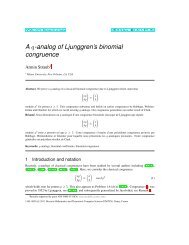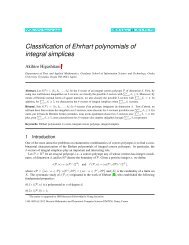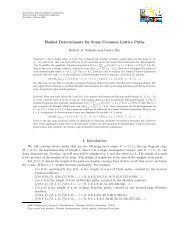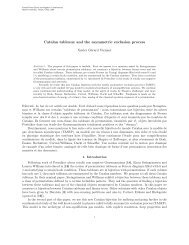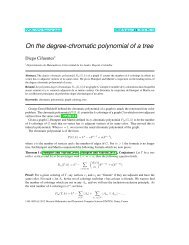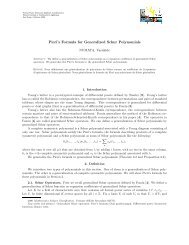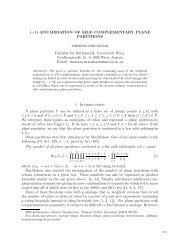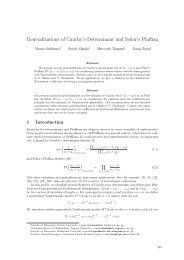Euler's partition theorem and the combinatorics of -sequences
Euler's partition theorem and the combinatorics of -sequences
Euler's partition theorem and the combinatorics of -sequences
You also want an ePaper? Increase the reach of your titles
YUMPU automatically turns print PDFs into web optimized ePapers that Google loves.
Question: What is <strong>the</strong> generating function for truncated l-lecture<br />
hall <strong>partition</strong>s?<br />
Question: What is <strong>the</strong> right q-analog <strong>of</strong> <strong>the</strong> l-nomial (<strong>and</strong> <strong>the</strong><br />
right interpretation) to explain <strong>and</strong> generalize lecture hall<br />
<strong>partition</strong>s?<br />
(We know what lecture hall <strong>partition</strong>s look like in <strong>the</strong> “l-world”.<br />
What about ordinary <strong>partition</strong>s? <strong>partition</strong>s into distinct parts?)<br />
Question: There are several q-series identities related to Euler’s<br />
<strong><strong>the</strong>orem</strong>, such as Lebesgue’s identity <strong>the</strong> Roger’s-Fine identity<br />
Cauchy’s identity Are <strong>the</strong>re l-analogs?



